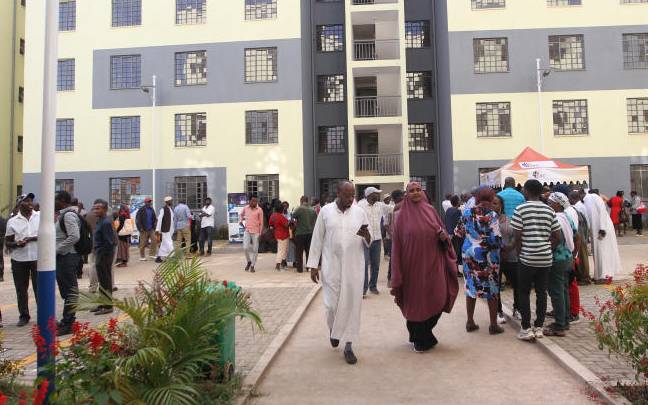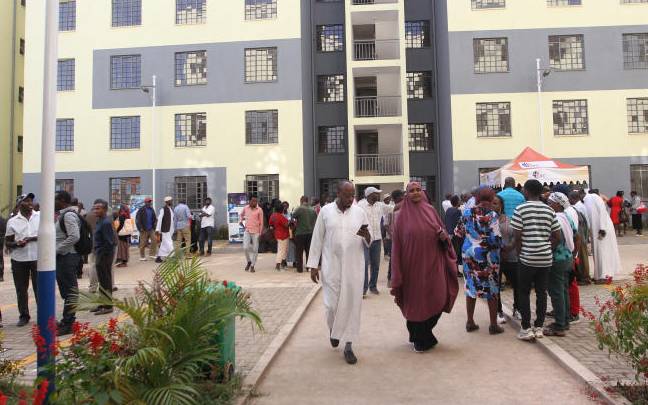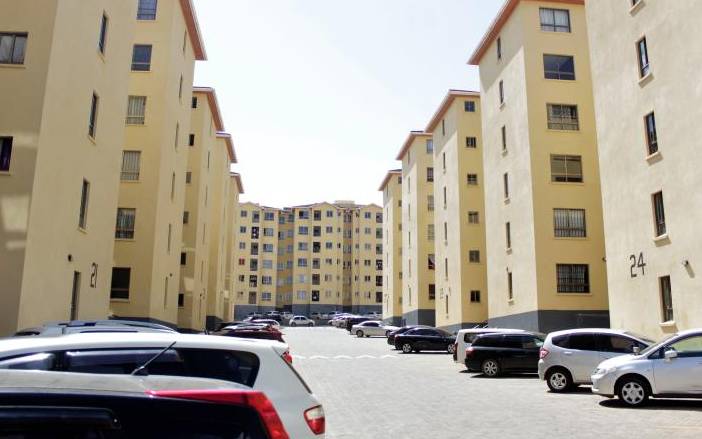 By
Wainaina Wambu
By
Wainaina Wambu

Kenyans queueing to view the 228 completed units out of 1370 being constructed by government at Park road Nairobi under the affordable housing programme. Picture taken on Friday March 6, 2020. [Jonah Onyango, Standard]
For the majority of Kenyans, owning a home is like a lifetime of chasing the wind. Many live on the edge of poverty, meaning that saving for a house is only a dream. The high cost of credit also puts mortgages out of reach for the ordinary citizen.
This informs the high demand for the government-led affordable housing initiative, billed as the next frontier in Kenya’s property market.
A property slump in recent years has been worsened by the Covid-19 pandemic, but industry investors now see affordable housing as a way to the money.
“The demand for affordable housing is big. The future I see for the medium term is that affordable housing will be the engine that will power the real estate sector, not the upper end,” Housing Finance (HF) Chief Executive Robert Kibaara told Home & Away in an interview.
On the back of a property slump, HF is charting a new path diversifying into retail banking from solely depending on its mortgage financing business.
Its property business accounts for what Kibaara describes as the “bad bank” characterised by high defaults and non-performing loans (NPLs), which HF has been aggressively taming in an ambitious turnaround strategy.
For the financial year ending December 2019, the bank’s NPLs reduced by Sh1 billion from Sh13.3 billion in 2018 to Sh12.3 billion in 2019.
The bank said it will not finance any new development projects and is exiting most of them. The plan now is to partner with developers working in affordable housing and support people who want to own homes and carry out the legacy of its mortgage business.

“Banks like us are putting in measures to make sure we sort out the demand and supply side to make it easier to own homes,” Kibaara says.
“The bad news is that the market in the middle and upper segments has overheated. That’s why when you go to upmarket houses you find all these places without buyers.”
He says Kenyan developers have undergone “psychological phases” and the new reality is low margins.
Past success is the enemy, with developers for many years enjoying high margins of up to 40 per cent, but these days are long gone, he says.
He further notes that, especially with affordable housing, the margins have been cut to five.




No comments :
Post a Comment